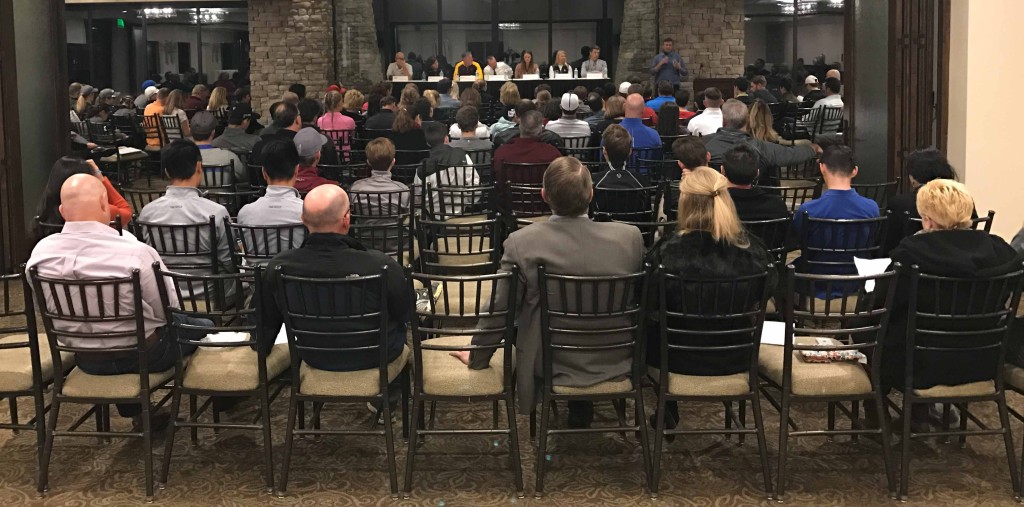The JGAA held a successful College Golf Night on Thursday, January 26th. Ted Gleason, with Road to College Golf, lead a discussion with Arizona college golf coaches. The panel of college coaches included Arizona State Men’s Coach Matt Thurmond, Arizona State Women’s Coach Missy Farr-Kaye, University of Arizona Women’s Coach Laura Ianello, University of Arizona Men’s Coach Jim Anderson, Grand Canyon University Men’s Coach Mark Mueller and Grand Canyon University Women’s Coach Lauren Giesecki.
The focus of the seminar was finding the best fit for each individual junior golfer, while talking about the college golf recruiting process. CLICK HERE to view the topics that were discussed at the JGAA College Golf Night.

Important links on the College Recruiting Process include:
- collegegolf.com
- golfstat.com
- birdiefire.com
- eligibilitycenter.org
- njgs.com
- nccga.org
- playnaia.org
- roadtocollegegolf.com
Articles for the Junior Golfer Thinking About Collegiate Golf
Originally Posted on Junior Golf Scoreboard(www.njgs.com)
When and How Should I Initiate a Phone Call to a College Coach?
Be prepared with specific talking points and questions.
As a junior golfer in the midst of the recruiting process, you probably find yourself writing a number of emails to college coaches in an effort to gain their attention. The recruiting process requires you to be proactive in your communication with coaches and that can come in various forms. A good way to differentiate yourself in the recruiting process is to initiate a phone call to a college coach. This demonstrates to a coach that you are being proactive in the college process as well as displaying a high level of maturity and independence. Phone calls should only be initiated once you have thoroughly researched the school/golf program, evaluated your golf and academic profile to ensure you are closely aligned to that particular school’s requirements and emailed your introductory letter and resume to the coach. Once these actions have been executed, a follow up phone call to confirm the coach has received your information would be appropriate. Introducing yourself “live” can be a great way to further express your interest in the school/golf program, learn more about the coach and team as well as what the coach expects from a prospective student-athlete.
As a reminder, a prospective student-athlete may initiate phone calls to a college coach at anytime, regardless of their graduation year. However, college coaches are restricted in terms of when and how often they are able to return or initiate phone calls to a prospective student-athlete. NCAA rules allow Division I coaches to return or initiate a phone call to a prospective student-athlete beginning September 1 of a prospect’s junior year in high school. There is no limit on the number of calls a Division I coach can make as of the aforementioned date and texts are also permissible at this time. In Division II, there is no limit on the number of calls a college coach can make beginning June 15 prior to a prospect’s junior year in high school. For Division III coaches, there is no limit on the number of calls or when they can be made. Understanding the NCAA rules a coach must abide by will allow you to be better prepared for how a coach may or may not reply to your phone call.
Once you are ready to make your call, there are a number of key talking points to keep in mind:
- • Do your homework prior to the call and write down a few notes regarding the coach, player roster and/or team results/schedule that you can refer to during the call. This is important as it shows you have a sincere interest in their respective program and have gone the extra mile in terms of learning about the school/program.
- • Be confident when introducing yourself. Make sure to state your name, grad year, city/state where you reside and let them know you had recently emailed them an introductory letter and resume.
- • Be prepared to discuss your academic profile (grades, core classes, SAT/ACT if applicable), your golf background (highlights, upcoming tournament schedule, swing instructor, what you’re working on in your game) and why you have an interest in the school/golf program.
- • Establish a list of 4-5 key questions. These questions would vary depending on your graduation year and if the coach has replied to your introductory email. A few examples:
- o What are you looking for in a prospective student-athlete with respect to an academic profile and golf resume?
- o What is your timing for determining your recruiting class for my graduation year?
- o Are there any particular tournaments you evaluate more closely than others?
- o How often would you like me to communicate my academic and golf results?
- • When calling during the school year, you may want to try to reach the coach during the morning hours, as they will typically be in their office at this time since college programs generally practice in the afternoon.
- • If you reach the Head Coach and only the assistant coach had received your previously emailed information, you can confirm to the Head Coach that they have your information on file, affirm your interest in their school/golf program, and then go through your pre-established talking points.
- • If the coach does not answer, leave a brief message including your name, grad year and let him/her know you’ll try back at another time.
Initiating phone calls to college coaches is an effective way to stand out in the recruiting process. Coaches receive hundreds of emails from prospective recruits, but far fewer phone calls. Make it a point once you have emailed a coach, to follow up with a phone call to further express your interest and provide the coach the opportunity to get to know who you are and why you have such a strong interest in their respective school and golf program. Be prepared for the call and then just be yourself when you connect with the coach.
Take the proactive approach!
Coach Gleason
www.roadtocollegegolf.com
This article was originally published on Junior Golf Scoreboard (www.njgs.com)
What is the Purpose of the NCAA Eligibility Center?
Use the NCAA Guide for the College Bound Student-Athlete as a Resource.
The NCAA Eligibility Center certifies both the academic and amateur credentials of all prospective student-athletes intending to compete in NCAA Division I or II athletics. Prospective student-athletes should register with the Eligibility Center during their junior year of high school at www.eligibilitycenter.org. To be eligible to compete in Division I or II athletics, a prospective student-athlete must be certified by the NCAA Eligibility Center. There are slightly different initial eligibility requirements between Division I and Division II, which are detailed in the NCAA Guide for the College Bound Student-Athlete. It is important to note, meeting the NCAA academic requirements does not guarantee your admission into a college. You must still apply for admissions at your desired college. In Division III, each college or university establishes their own respective admissions standards and therefore Division III bound student-athletes are not certified by the NCAA Eligibility Center.
The NCAA Eligibility Center will ultimately certify that you have graduated from high school; have completed the appropriate core courses to meet initial eligibility requirements; earned a minimum required GPA in your core courses; earned a combined SAT or ACT score that aligns with your core GPA on the test score sliding scale (only Division I certification currently uses a sliding scale). To ensure the NCAA Eligibility Center has the required information to certify your initial eligibility, you’ll want to have your test scores (SAT and/or ACT) sent to the NCAA Eligibility Center directly from the testing agency and make sure your high school transcripts are sent directly from your high school to the NCAA Eligibility Center after the completion of your junior year (and upon high school graduation). There is also an amateurism questionnaire that you will begin filling out during your initial registration and then completed on or after April 1 of your senior year in high school.
To better familiarize yourself with the NCAA Eligibility Center, please download a copy of the NCAA Guide for the College Bound Student-Athlete at www.eligibilitycenter.org. The NCAA Guide for the College Bound Student-Athlete is an excellent resource for all prospective student-athletes to utilize throughout the recruiting process. The NCAA Guide for the College Bound Student-Athlete covers the following areas:
- o NCAA Eligibility Center & Registration
- o Academic-Eligibility Requirements
- o Core Courses, GPA, Test-Score Requirements, and Special Conditions
- o Amateurism-Eligibility Requirements
- o Recruiting Regulations & Key Recruiting Terms
- o Athletically Related Financial Aid
- o Information for Parents, Guardians, High School Counselors & Athletics Administrators
The NCAA Guide for the College Bound Student-Athlete will assist both you and your parents in staying on track with the NCAA Eligibility Center. The vast majority of prospective student-athletes will be certified and cleared to compete soon after they have submitted all the necessary documents and their college has requested final certification. The key is to follow the recommended guidelines in a timely and thorough manner. If you are planning to compete in Division I or II college athletics, remember to register with the NCAA Eligibility center during your junior year and ensure you follow all recommended tasks detailed in the NCAA Guide for the College Bound Student-Athlete.
Coach Gleason
www.roadtocollegegolf.com
This article was originally published on Junior Golf Scoreboard (www.njgs.com)
What Does it Mean to “Redshirt” as a College Student-Athlete?
Redshirting can be a very positive and productive experience if approached the right way.
Some of you may have heard of college student-athletes ‘redshirting’ during their respective college career. Redshirting describes a student-athlete who does not represent their school in intercollegiate competition in their respective sport for an entire academic year of college. The NCAA defines ‘competition’ as participation against outside competition (another team(s) from another college(s)). The “redshirt” designation indicates that a student-athlete has not exhausted a season of eligibility as defined by NCAA rules. It is important to note that during a redshirt year a student-athlete IS allowed to participate in all practices, intrasquad qualifiers/matches, workouts, team meetings and training sessions.
Per NCAA rules, each student-athlete has five years, from the time of his or her initial full-time enrollment in college, to compete in four years of athletic competition. The NCAA rules also state that any intercollegiate competition, regardless of the duration, shall count as one season of competition in that sport. For example, if a college golfer played one 18 hole round of intercollegiate competition, he/she would be charged with one of their four years of eligibility.
Occasionally a student-athlete will elect to redshirt during their initial year of college to adjust to the demands of being a student-athlete. In these instances, coaches will support the student-athlete realizing they would benefit from an additional year of development prior to participating in intercollegiate competition. Additionally, a redshirt year provides student-athletes the opportunity to spread their academic workload over a five-year period and established a strong academic foundation from the beginning. The decision to redshirt is a collaborative decision made by the student-athlete, his/her parents and the college coach.
Compared to other college sports, golfers miss a significant amount of class time, upwards of 8-10 days per semester. Freshman student-athletes therefore must learn how to balance their time between practice, academics, competition and their social life as quickly as possible. Redshirting eliminates the competition component and allows the student-athlete an opportunity to assimilate to their new environment and culture. Redshirting may take place at anytime throughout a student-athlete’s college career and is not limited to freshman only. A redshirt year is a very important time in a player’s development and should be viewed as an opportunity to get ahead in school, improve your fitness level, advance your golf game and create an efficient time management system that balances the demands a college student-athlete faces.
Redshirting can also be utilized when a student-athlete gets injured prior to the season and the prospects of he/she competing for the majority of the season are limited. A player who suffers a mid season injury can apply for a medical redshirt season. Injured players who opt to redshirt can then rehabilitate their injury while preserving their NCAA maximum seasons of eligibility.
Redshirting can be a beneficial and positive experience if used effectively and will be a decision that is determined once you get to college. The student-athlete, his/her parents and coach will assess the best path to make his/her college career the most successful.
Coach Ted Gleason
www.roadtocollegegolf.com
This article was originally published on Junior Golf Scoreboard (www.njgs.com)








































